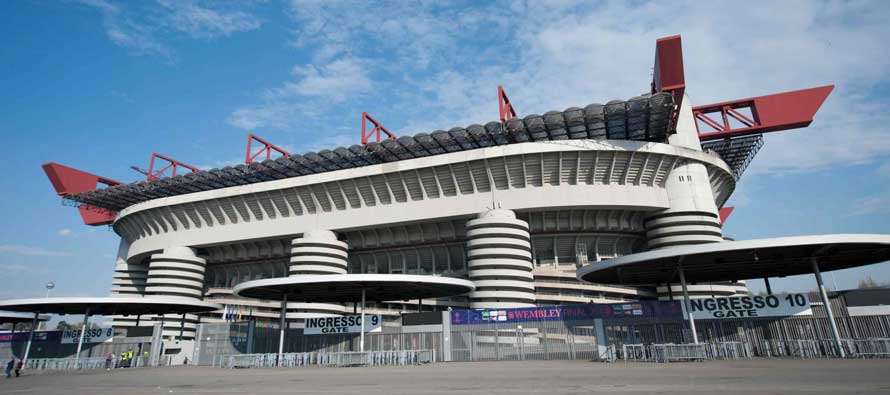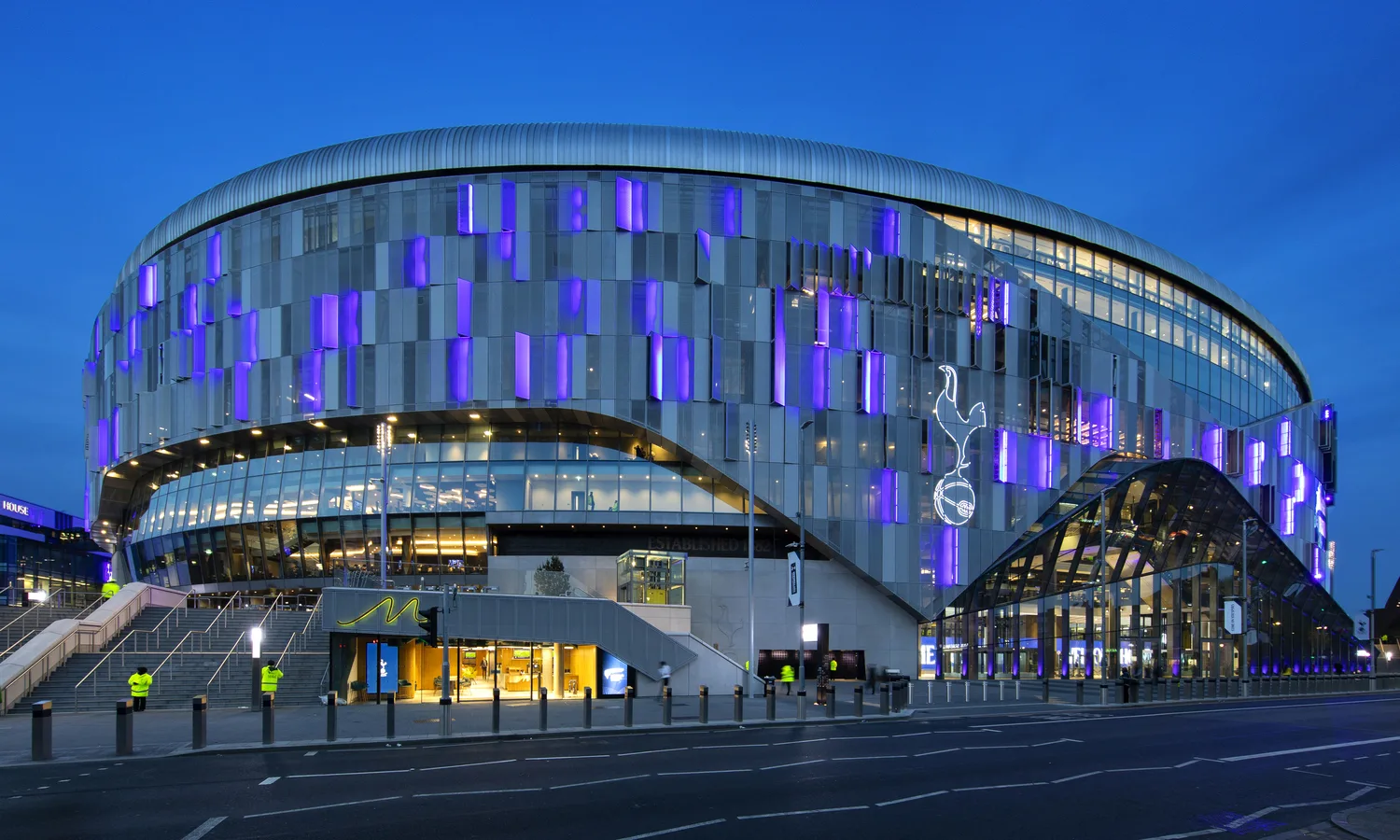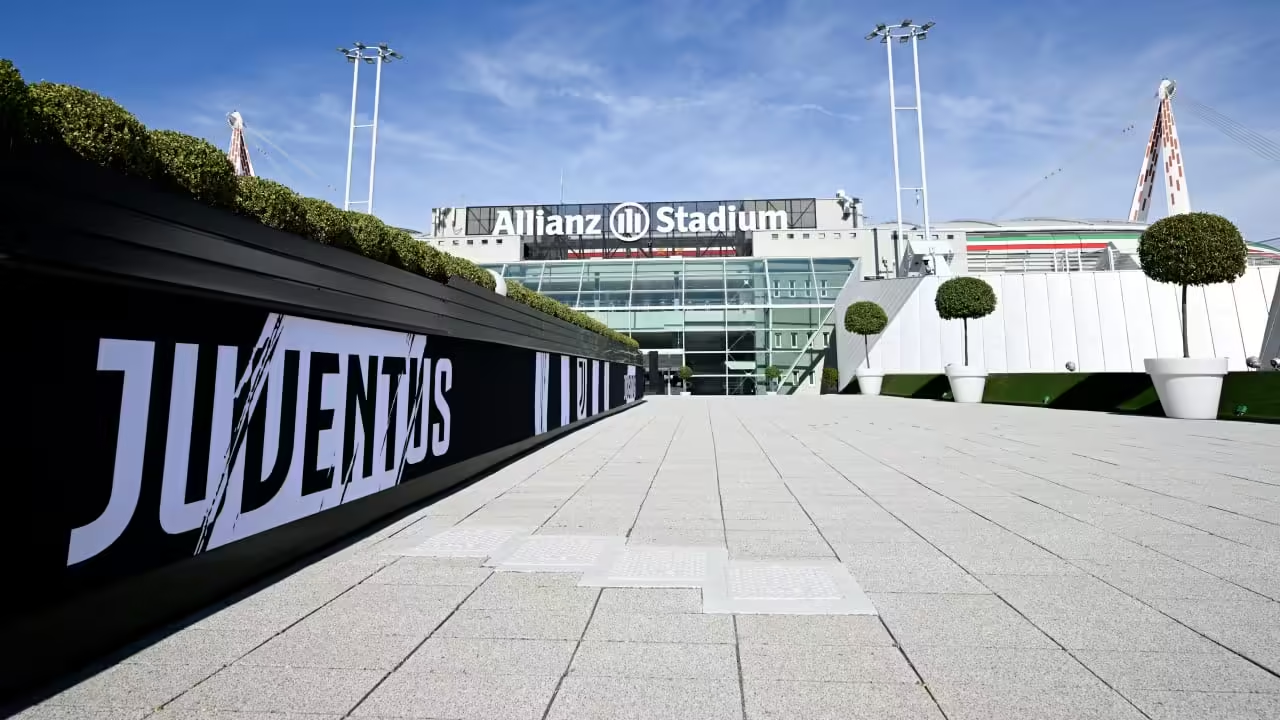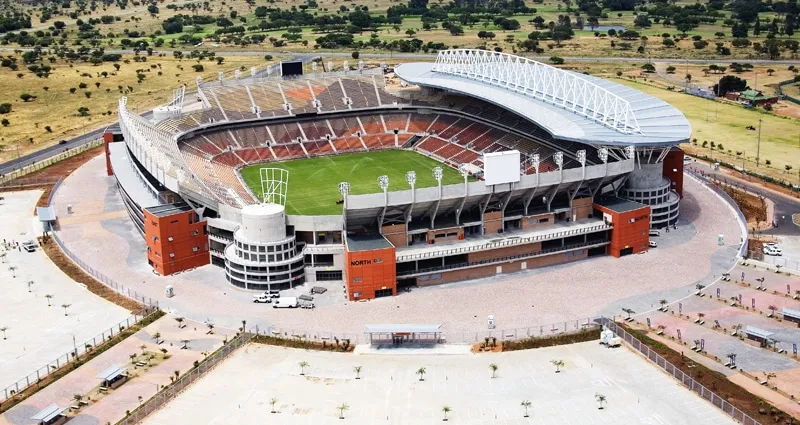San Siro Stadium is a legendary football arena located in the western part of Milan, Italy. It is one of the largest stadiums in Europe, with a seating capacity of 80,018. The stadium is commonly known as the Stadio Giuseppe Meazza by Inter Milan fans and as the San Siro by AC Milan fans.
San Siro has become an iconic shrine to sporting greatness in Italy. The stadium has witnessed some of the most legendary football matches and has become an integral part of the cultural fabric of Milan. The stadium is named in honor of Giuseppe Meazza, the two-time World Cup winner. San Siro’s architectural splendor and significance make it a must-visit destination for football enthusiasts seeking the heart and soul of Italian football.
Key Takeaways
- San Siro Stadium is one of the largest stadiums in Europe and is located in the western part of Milan, Italy.
- The stadium is commonly known as the Stadio Giuseppe Meazza by Inter Milan fans and as the San Siro by AC Milan fans.
- San Siro has become an iconic shrine to sporting greatness in Italy and is a must-visit destination for football enthusiasts seeking the heart and soul of Italian football.
The History of San Siro

Construction and Inauguration
San Siro Stadium is located in the San Siro district of Milan, Italy. The construction of the stadium was initiated in 1925 by Piero Pirelli, the then-president of AC Milan. The stadium was completed in just 13 months with a cost of 5 million Italian lire. The stadium was inaugurated on September 19, 1926, with a friendly match between Milan and Inter, which ended in a 6-3 victory for Milan.
The stadium initially had a capacity of 35,000, with four separate stands. However, over the years, the stadium underwent several renovations and expansions, increasing its capacity to 80,018.
Renovations and Modernization
In 1935, the stadium was sold to the city of Milan, and ten years later, Inter joined Milan in playing their home games at San Siro. In 1980, the stadium was named in honor of Giuseppe Meazza, the two-time World Cup winner.
Throughout the years, San Siro has undergone several renovations and modernizations, including the construction of a new third tier, which increased the stadium’s capacity to 85,700. The stadium also underwent a major renovation in 1990, which included the installation of new seats, a new roof, and the construction of new VIP boxes.
In recent years, there have been plans to demolish San Siro and replace it with a new stadium. The new stadium, called “The Cathedral,” is set to be built in the same location as the current stadium and will have a capacity of 60,000.
Historical Matches and Events
San Siro has hosted several historical matches and events throughout its history. The stadium hosted three matches during the 1934 World Cup, including the final between Italy and Czechoslovakia. The stadium also hosted the 1965 European Cup final between Inter and Benfica, which ended in a 1-0 victory for Inter.
San Siro has also been the site of several memorable matches between Milan and Inter, including the 2003 Champions League quarter-final, which Milan won 1-0, and the 2004 Derby della Madonnina, which saw Inter win 3-2.
Overall, San Siro has played a significant role in the history of Italian and world football, and it remains one of the most iconic and revered stadiums in the world.
Architectural Splendor and Significance
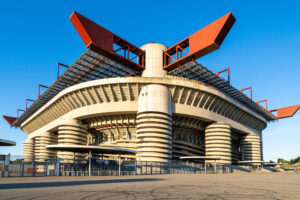
San Siro Stadium is an iconic structure that stands tall as a testament to the rich culture of football history and architectural brilliance. The stadium, also known as the Giuseppe Meazza Stadium, is located in the western part of Milan and is the home ground for two of the most successful football clubs in Italy – AC Milan and Inter Milan.
Design and Structure
The stadium was designed by architect Stacchini and engineer Cugini, and was completed in 1926. It has undergone several renovations over the years, with the most recent one in 2015. The stadium has a unique oval shape and is built with concrete and steel. It has a distinctive tower that is visible from miles away. The stadium’s roof is made of steel cables and is designed to resemble a spider’s web.
Stadium Capacity and Facilities
San Siro Stadium has a seating capacity of 80,018, making it one of the largest stadiums in Europe. It has three tiers of seating and offers excellent views of the pitch from every seat. The stadium is equipped with state-of-the-art facilities, including VIP lounges, restaurants, and bars. The stadium also has a museum that showcases the history of the stadium and the two football clubs that call it home.
Cultural Impact and Legacy
San Siro Stadium has become an integral part of the cultural fabric of Milan. It has not only witnessed some of the most legendary football matches but has also hosted several concerts and other cultural events over the years. The stadium has also been featured in several movies and TV shows, cementing its status as an iconic landmark in Milan.
In conclusion, San Siro Stadium is a marvel of football architecture and culture. Its design, structure, stadium capacity, and facilities make it one of the most significant stadiums in Europe. Its cultural impact and legacy have made it an integral part of Milan’s history and identity.
Frequently Asked Questions
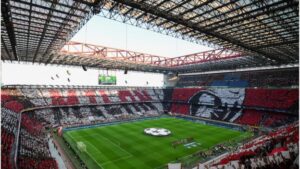
What historical significance does the San Siro Stadium hold in Italian football?
The San Siro Stadium is a historic venue that holds a special place in the hearts of football enthusiasts in Italy. The stadium has been home to two of Italy’s most successful football clubs, AC Milan and Inter Milan, since its opening in 1926. It has also hosted numerous international matches and major football events such as the 1990 FIFA World Cup. The stadium has witnessed some of the most iconic moments in Italian football history, including the legendary Milan Derby.
How can one purchase tickets for a tour of the San Siro Stadium?
Tickets for a tour of the San Siro Stadium can be purchased online or at the stadium ticket office. It is recommended that visitors book their tickets in advance to avoid long queues and disappointment. The tour provides a unique opportunity to explore the stadium’s history, architecture, and behind-the-scenes areas such as the dressing rooms, press room, and VIP areas.
What are the notable events hosted at the San Siro aside from football matches?
The San Siro Stadium is not just a football stadium; it is also a venue for other major events such as concerts and cultural events. Over the years, the stadium has hosted some of the biggest names in music, including Madonna, Michael Jackson, and U2. It has also hosted major cultural events such as the 1984 European Athletics Championships.
Why are there two names for the San Siro Stadium, and which is officially recognized?
The stadium is officially named the Stadio Giuseppe Meazza, after the legendary Italian footballer. However, it is commonly known as the San Siro Stadium after the Milan neighborhood where it is located. The two names are used interchangeably, and both are officially recognized.
What facilities are included in the San Siro Stadium tour?
The San Siro Stadium tour includes access to various parts of the stadium, including the dressing rooms, press room, VIP areas, and the pitch. Visitors can also explore the stadium’s museum, which houses a collection of memorabilia and artifacts that showcase the stadium’s history and legacy.
How has the San Siro Stadium evolved over the years in terms of structure and capacity?
The San Siro Stadium has undergone several renovations and upgrades over the years to improve its infrastructure and increase its capacity. The stadium’s current capacity is over 80,000, making it one of the largest stadiums in Europe. The most recent renovation took place in 2015, which involved the installation of new seating and an improved lighting system. Despite the upgrades, the stadium has managed to retain its historic charm and character, making it a must-visit destination for football enthusiasts.
Other Stadiums Articles:
Check Out: Luzhniki Stadium: Moscow’s Monument to Sporting Heritage and Historic Triumphs
Check Out: Borussia Dortmund’s Fortress: A Chronicle of Passion and Triumph at Signal Iduna Park
Check Out: Santiago Bernabéu: The Citadel of Galácticos – Real Madrid’s Eternal Home of Football Brilliance
Check Out: Wembley Stadium: Echoes of Glory – A Timeless Icon in London’s Sporting Tapestry
Also Check: Camp Nou: Beholding Barcelona’s Sporting Legacy at a Cathedral of Football Majesty
